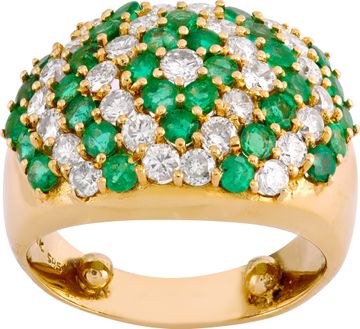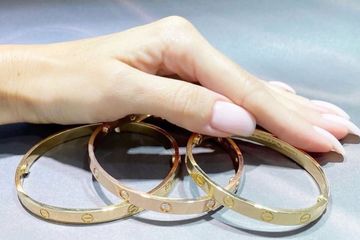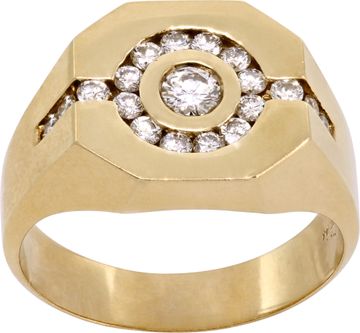Ulysse Nardin Brand History & Key Models

For nearly two centuries, Ulysse Nardin has built its reputation on precision watchmaking and a steady drive to innovate. Founded in 1846 in Le Locle, Switzerland, the brand made its name by producing ultra-precise marine chronometers, critical tools for 19th-century naval explorers navigating the open seas. While the company has undergone dramatic transformations since its beginnings, what remains constant is its pioneering spirit. Whether advancing silicon technology, experimenting with dial-making, or developing mechanical marvels like the Freak or Moonstruck, Ulysse Nardin has always forged its own path.
Precision, From the Start
Ulysse Nardin, the man, was born into a family of watchmakers and opened his own workshop in Le Locle at just 23 years old. He focused on a key challenge of the era: creating precision instruments for navigation at sea. With maritime trade expanding, accurate deck chronometers were essential for determining longitude on long voyages.

By 1862, Nardin’s chronometers had already won a gold medal at the London World Fair. His son, Paul-David Nardin, carried the legacy forward, dominating chronometry trials at the Neuchâtel Observatory and supplying instruments to more than 50 navies. Over the next century, Ulysse Nardin produced more marine chronometers than any other Swiss brand, accounting for 77% of all certified examples.
Rebirth and Reinvention
Despite its historic successes, Ulysse Nardin wasn’t immune to the turbulence of the Quartz Crisis in the 1970s and 80s. The company’s future shifted in 1983 when it was acquired by entrepreneur Rolf Schnyder. Alongside master watchmaker and inventor Ludwig Oechslin, Schyder ushered in a new era focused on mechanical innovation and high complications.

Together, the pair launched the Trilogy of Time — a trio of astronomical watches beginning with the Astrolabium Galileo Galilei in 1985, followed by the Planetarium Copernicus in 1988, and the Tellurium Johannes Kepler in 1992. These timepieces featured intricate astronomical complications and a combined total of 21 functions, setting new standards for what was possible in wristwatch design.

Other milestones from the era include the San Marco minute repeater with automaton Jacquemarts (1989), the GMT +/- dual time watch with quick-setting local time (1994), and the Perpetual Ludwig (1996), the first perpetual calendar that could be adjusted both forward and backward. These latter two complications were eventually combined into the GMT +/- Perpetual (1999), a superbly intuitive travel-friendly watch for its time.
Enter the Freak
In 2001, Ulysse Nardin released what may be its most iconic watch to date: the Freak. Radically different in form and function, the Freak had no traditional hands, no dial, and no crown. Instead, the entire movement rotates to indicate the time, with the lower bridge marking the minutes and the upper bridge the hours. The Ulysse Nardin Freak also pioneered the use of silicon components in watchmaking, something that other brands would take years to adopt.

The Freak line has since evolved into Ulysse Nardin’s flagship model, spawning successors like the Freak DIAMonSIL (2007), which featured a dual escapement made of diamond-coated silicon, and the Freak ONE (2023), which won the “Iconic Watch” prize at the Grand Prix d’Horlogerie de Genève (GPHG). Two decades later, the Freak remains a symbol of technical genius and unorthodox design.
Innovation on All Fronts
Beyond the Freak, Ulysse Nardin has remained committed to inventive watchmaking. The Moonstruck watch (2009) offered a poetic take on celestial mechanics, displaying moonphases, global tidal patterns, and the positions of the sun and moon in relation to the Earth. The Ulysse Anchor Tourbillon, launched in 2015, won top honors at the GPHG for its constant-force escapement made entirely of silicon components.

On the production side, Ulysse Nardin has invested heavily in vertical integration. It co-founded Sigatec in 2006, a specialist in micromechanical silicon components, and acquired Donzé Cadrans in 2011, a dial-making atelier known for its grand feu enamel artistry. These moves gave Ulysse Nardin more control over its production and positioned it as an integrated manufacture of high-end Swiss watches with distinct technical capabilities.
Today’s Ulysse Nardin
In 2022, Ulysse Nardin underwent a management buyout, regaining its independence and doubling down on its identity as an inventive, independent Swiss high-horology watchmaker. Under the leadership of CEO Patrick Pruniaux, the brand has continued to evolve its modern lineup while staying true to its core values of technical mastery and mechanical creativity.

Current Ulysse Nardin collections include the Freak family, the angular and openworked Blast models, the Marine series that nods to the brand’s nautical roots, and the Diver range built for serious underwater use. For collectors drawn to classic styles, the Classico collection offers traditional silhouettes, often with enamel dials crafted by Donzé Cadrans. Popular discontinued Ulysse Nardin models on the secondary market include the boldly styled Executive Dual Time, the cathedral-chiming Sonata alarm watch, and the distinctive tonneau-shaped Michelangelo.
If you’re drawn to watches that offer something unexpected, whether in design, materials, or mechanical ingenuity, Ulysse Nardin is a name worth knowing.
Discover Ulysse Nardin at Gray & Sons
Ulysse Nardin continues to chart its own course in watchmaking, honoring its past while constantly exploring what’s next. If you’re looking to add one of these remarkable timepieces to your collection, discover the Gray & Sons selection of pre-owned Ulysse Nardin watches.

Every watch is inspected, authenticated, and restored by Swiss-trained watchmakers. Visit us in-store or online at grayandsons.com to find your next great watch.
Exquisite New Arrivals and Timeless Classics: Gray and Sons' June 2025 Showcase
NEXT ARTICLE
Nautical Precision: Luxury Watch Complications for Summer 2025 Yachting Adventures






